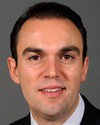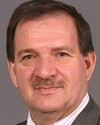I haven't spoken yet, so I'll introduce myself. I'm Kapil Khatter. I'm a family physician and I'm also with PollutionWatch.
I only wanted to say two things. One is that we are looking forward to the government's action plan and that we recognize the amazing work that's been done in terms of categorization that has put us as world leaders. But we think it's important to recognize that what we need to be world leaders on is actually controlling harmful substances, and we don't feel we are at this point. If we want to deal with the rising rates of cancer and asthma and other problems, we need to actually be world leaders in dealing with hazardous substances.
Quickly on the topic of how we label things, I wanted to not let Mr. Lloyd's comment stand about the 19,000 substances we're not categorized in being referred to as safe. It kind of makes me giggle, because seven years ago I kind of knew this was coming, that the substances that weren't categorized then would be labelled safe as kind of a new spin. The government has never said that these substances are now safe. They are simply substances that did not meet certain criteria--persistent, bioaccumulation, inherent toxicity, and the highest production volume and potential for exposure.
What we know is that there are other routes within CEPA, and we've been reassured always that there are other routes within CEPA as to where we will get to those other 19,000 substances, where they are potentially toxic, even though they don't fit exactly in the criteria of categorization. And when we talk about reversing the burden of proof, it's important that we eventually have data on those substances to show that they are actually safe, because some of those substances that are in those 19,000 have skull and crossbones on them when they're in a container. They simply didn't happen to meet the specific criteria of categorization.
We need to continue to regard all the substances with some skepticism until we have enough evidence to show that they are safe.




